Complimentary worldwide shipping on orders over $400 · No import tariffs for most countries
Complimentary worldwide shipping on orders over $400 · No import tariffs for most countries
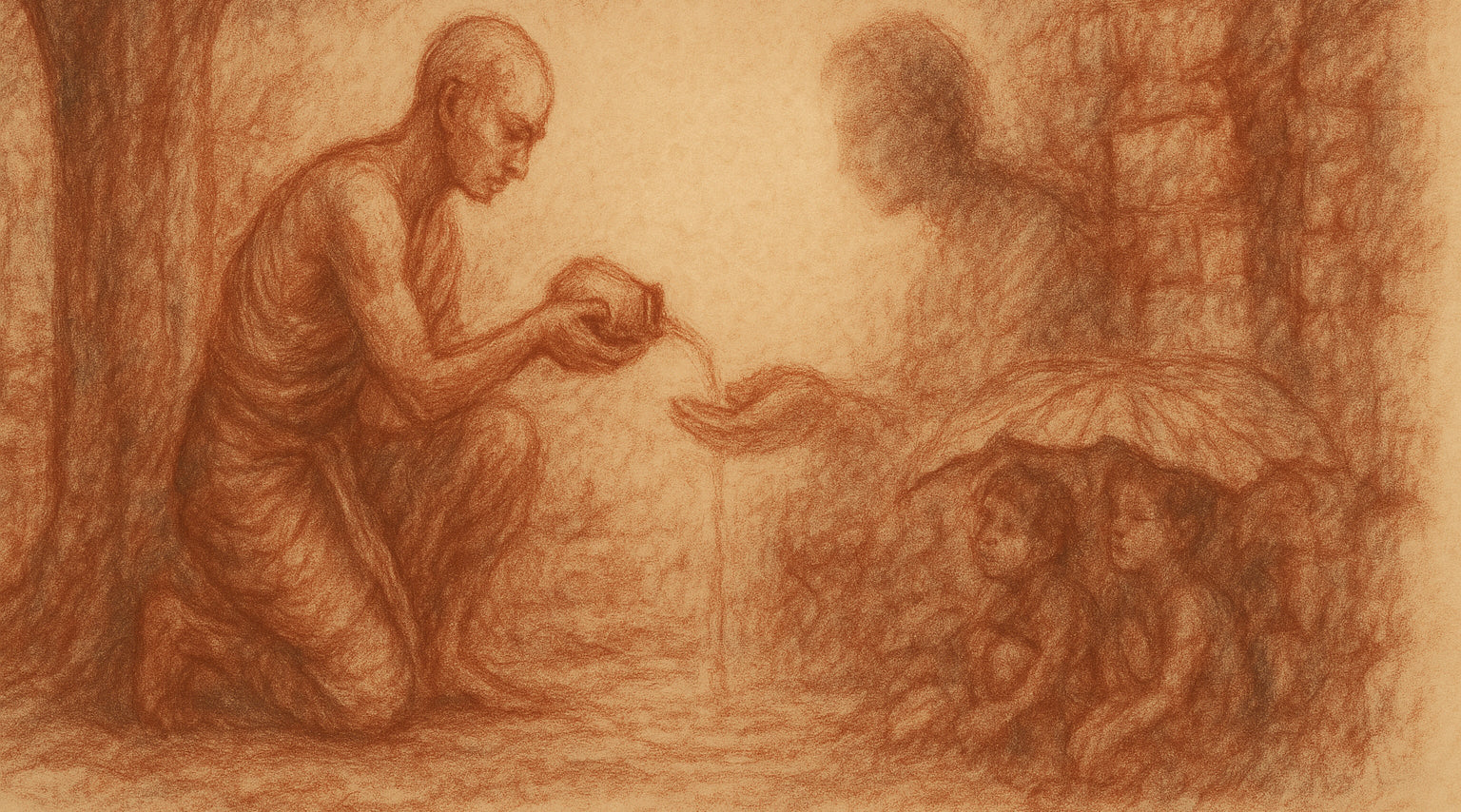
The Gift That Shook the Earth: Cambodia’s Sacred Tale of Giving
4 min read
Sanctuary of Meaning · Artist’s Journal
by Lucas Varro
He offered what could not be asked,
and poured the water of the vow—
not on the ground,
but into the open hand that could not hold it.
—from a field note in the shadow of a temple wall at Chau Say Tevoda
—
There are stories that unsettle the heart, and stories that sanctify it. And then there are those rare ones that do both—tales that wound and awaken, like a prayer whispered into silence and never quite answered.
The Cambodian version of the Vessantara Jataka, known as Moha Chinok, is one of these.
Even before the names are spoken—Vessantara, Maddi, Jujaka—the shape is already known: a prince who gives everything away. Not metaphorically, not symbolically—but truly. His children. His wife. His kingdom. His last comfort. His final defence. All surrendered, freely, in a spirit of boundless generosity. A gift so total it unsettles the heavens and disturbs the deep earth.
This is not a story one learns.
It is one the temples remember.
At Angkor, it appears quietly along corridor walls and lintels—sometimes in full narrative sequences, more often as fragments. A chariot departing through forest-shadow. A hand extended in the gesture of release. A child crouching beneath broad lotus leaves. The sacred moment when water is poured—neither merely ritual nor legal, but an act of cosmic consecration.
In these carvings, Vessantara is not always serene. Sometimes he is wild-eyed, wounded, nearly undone. Sometimes impossibly still. In either posture, the viewer is not meant to judge him, but to be judged—measured against the abyss of their own clinging.
—
The Cambodian version softens the severity of the Pali original. In Moha Chinok, Vessantara—here called Vesandar—is not the flawless bodhisattva of scripture, but a man with vows that wound and virtues that burn.
We see his fury when Jujaka leads the children away—his bow drawn, his heart breaking. We feel his jealousy when he offers Maddi, and the shame that follows when Indra, disguised as a brahmin, returns her. We even witness his obsession with the ransom needed to reclaim the children—a detail both petty and poignant.
Unlike in some Pali interpretations, Maddi is never taken. She remains nearby—offered, yes, but never claimed. Even this final act is returned to silence.
These are not flaws.
They are the charred edges of a soul walking through fire.
Even his famed generosity is shadowed by memory: a childhood vow made at ten—to never deny what is asked in alms. That vow binds him, not with devotion alone, but with dread. What began as sacred aspiration becomes a spiritual crucible—when it demands the unthinkable.
What does it mean to be good when goodness requires cruelty?
What is renunciation when what must be relinquished is the very heart of love?
This is not a tale of perfection.
It is a vision of how far a vow can reach—
into sorrow, into mercy,
into the heart of impermanence itself.
—
There is a moment in the tale—brief, trembling, unforgettable—when the children hide beneath lotus leaves. Jujaka has come. They know. Their father searches. They flee. But there is no escape from the hand of the vow.
Vessantara finds them. He kneels. He takes their hands in his. He does not smile. He pours the water.
Some versions say the water falls to the earth (dey). Others say it touches the outstretched hand (day) of the recipient. In Khmer, the two words are nearly indistinguishable. But the difference is everything.
One reading sanctifies the soil—what is lost returns to the ground.
The other enshrines the human hand—what is given is never gone.
In the temple murals of Cambodia, it is always the hand.
—
Jujaka, all hunger and cunning, becomes in this tale both trickster and threshold. His hunger is not noble, but it is necessary. Without him, there is no test. Without the test, no vow. Without the vow, no rupture. And without rupture—no return.
Eventually, the children are redeemed. The city welcomes them back. The wheel turns. The gods are quieted. But something has changed. Not just in the prince. In the world.
This is why the earth shook.
This is why the temples remember.
—
The Moha Chinok is not merely a tale of Buddhist generosity. It is a Cambodian prayer—saturated with longing, fear, mercy, and ambiguity. It gives us a saint who doubts. A father who weeps. A vow that cuts deeper than any sword. A return that arrives, but never fully restores.
I once stood before a weathered bas-relief of this moment in a quiet village pagoda. I could not speak. Not because of what was shown—but because of what was not. The children’s eyes were blank. The father’s gesture was tender, irrevocable. The water was suspended in mid-fall. A moment caught between justice and mercy, vow and violation.
I made a sketch that morning—just the hands, joined in offering.
It looked, strangely, like a prayer.

The hand of the father
holds not what he cannot keep—
but what he must give.
—
Some stories are preserved by repetition. Others, by reverent silence.
The Moha Chinok lives in both.
It is spoken in temple halls, danced by apsaras, etched in stone, whispered through the hands of monks who pour water into the earth after prayer.
And it is carried in the gaze of those who have lost what they loved,
and still find the strength to bow.
—
There are offerings that redeem,
and others that reveal.
But the deepest ones do both—
and leave the earth changed beneath them.
Also in Library
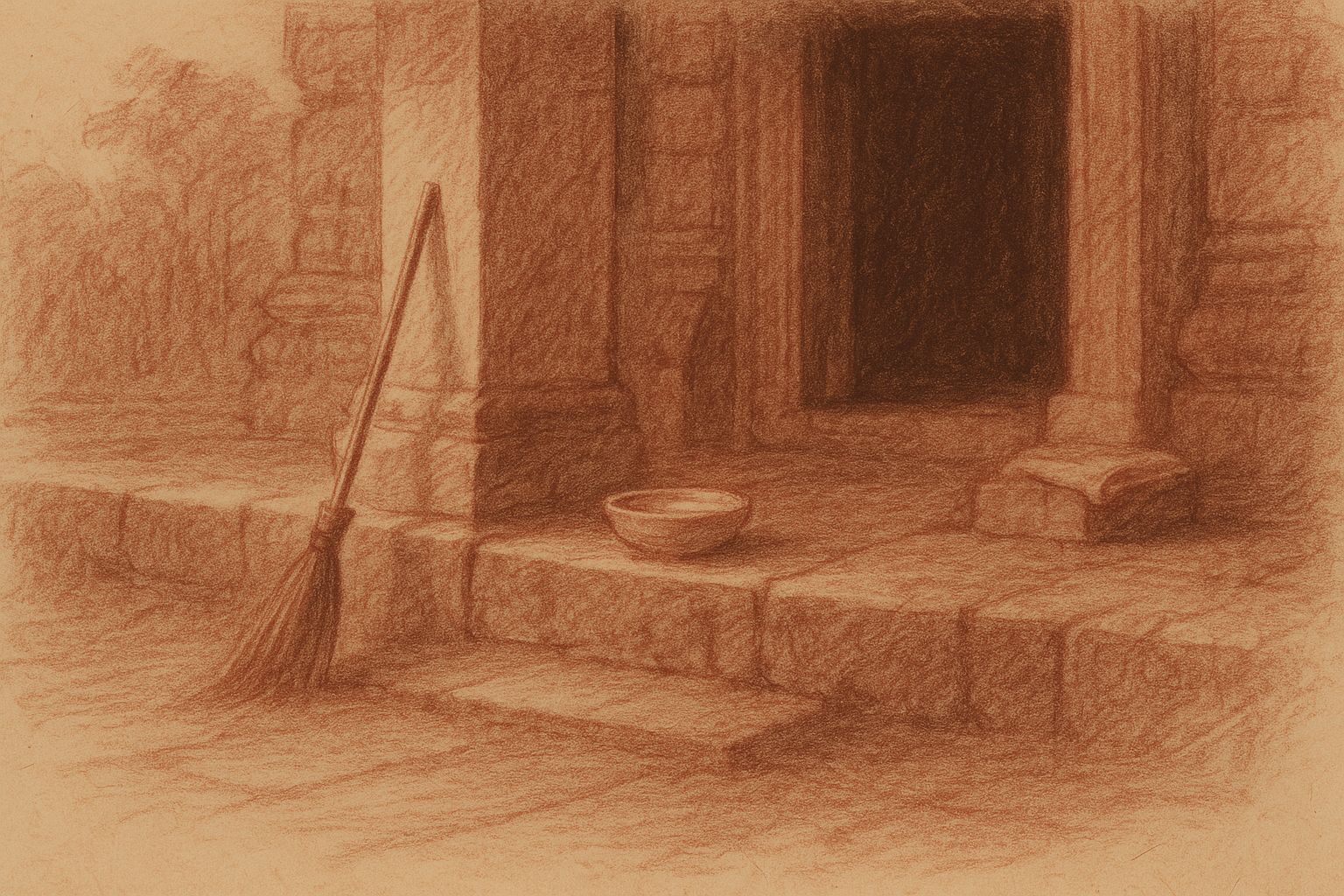
Those Who Keep the Way Open — On the Quiet Guardians of Angkor’s Thresholds
3 min read
Quiet gestures shape the way into Angkor — a swept stone, a refilled bowl, a hand steadying a guardian lion. This essay reflects on the unseen custodians whose daily care keeps the thresholds open, revealing how sacredness endures not through stone alone, but through those who tend its meaning.
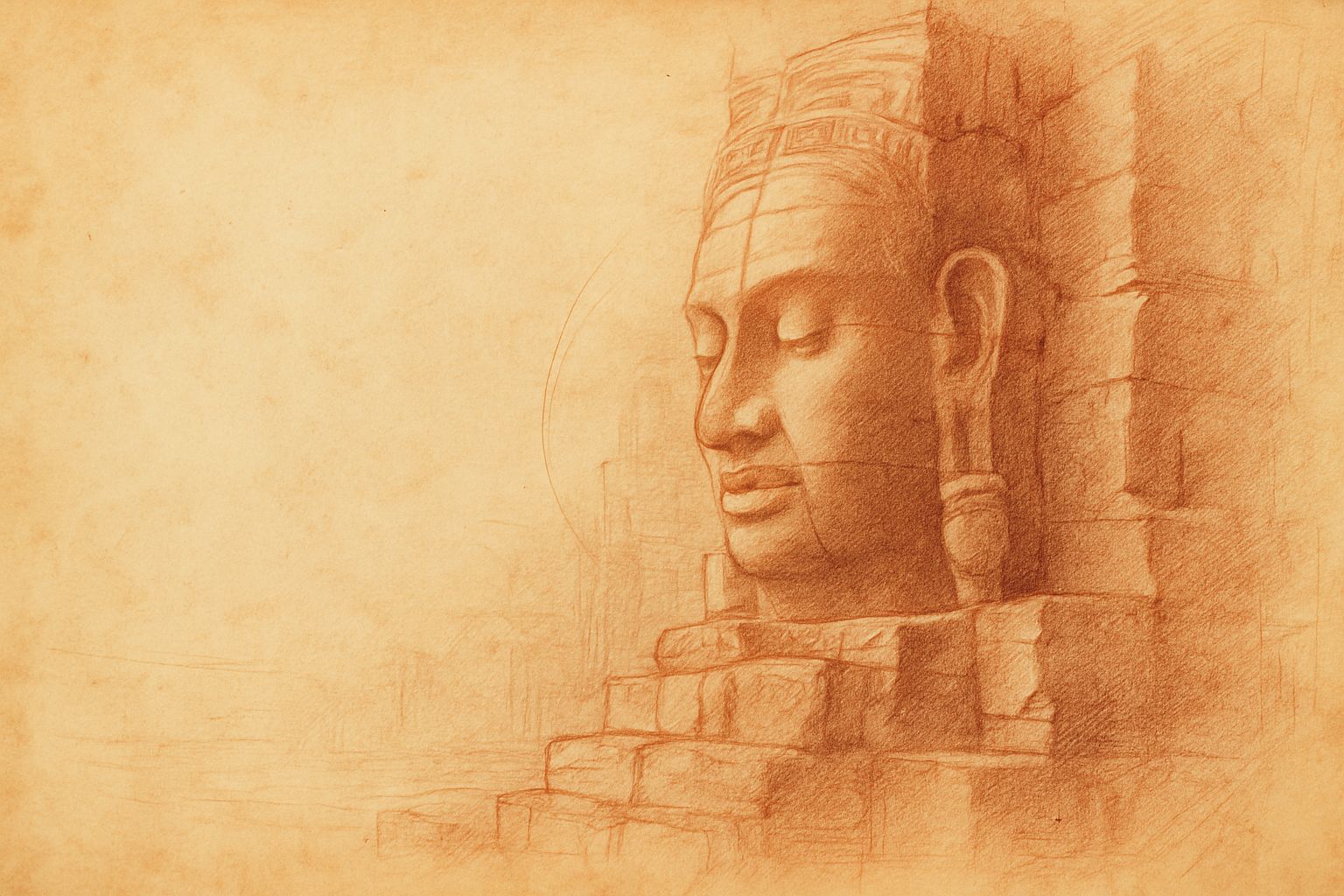
Multiplicity and Mercy — The Face Towers of Jayavarman VII
5 min read
A new vision of kingship rises at the Bayon: serene faces turned to every horizon, shaping a world where authority is expressed as care. Moving through the terraces, one enters a field of steady, compassionate presence — a landscape where stone, light, and time teach through quiet attention.
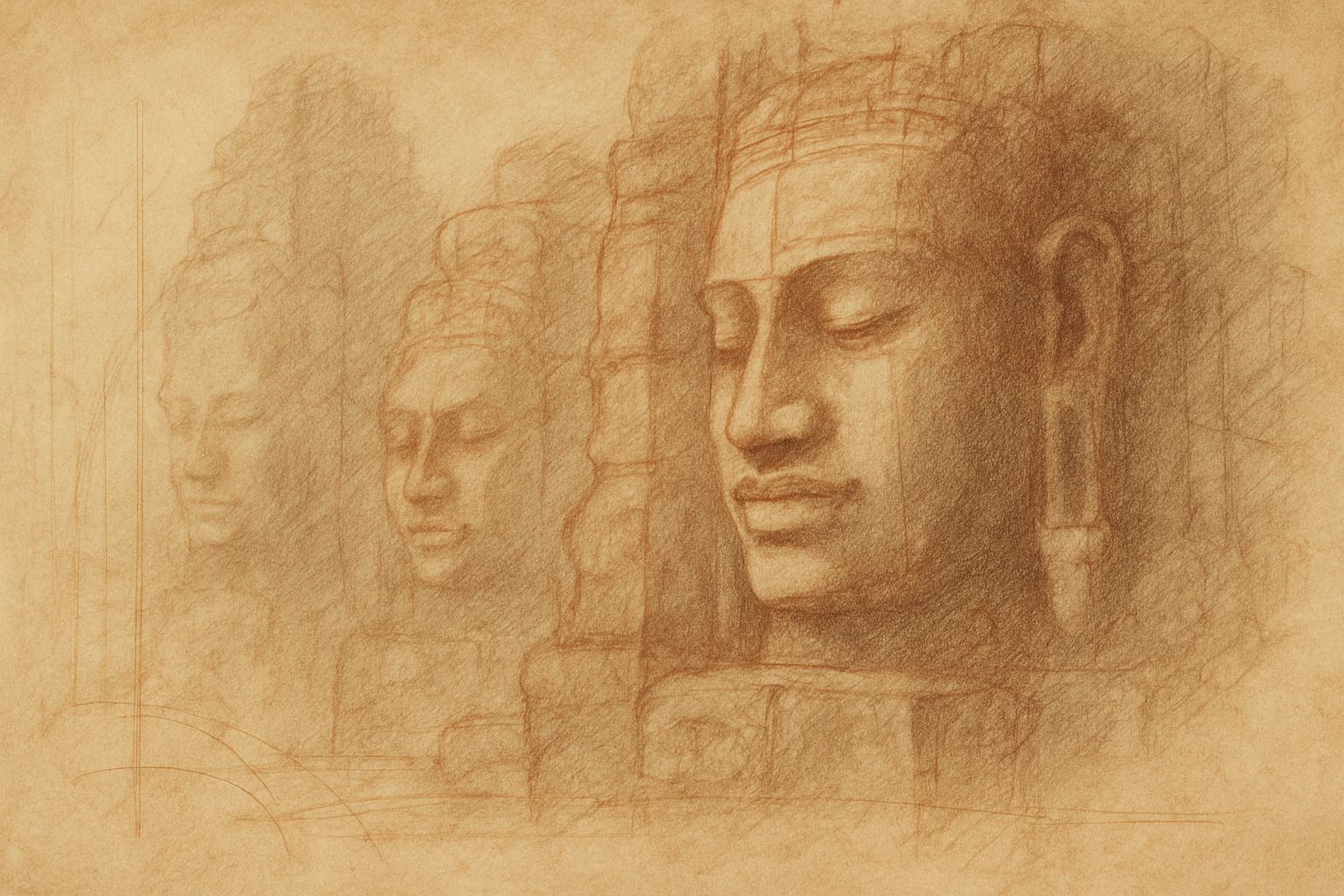
Stone That Dreams
4 min read
Bayon wakes like a mind emerging from shadow. Its many faces shift with light and breath, teaching that perception—and the self—is never singular. In walking this forest of towers, the pilgrim discovers a quiet multiplicity within, held together by a calm that feels both ancient and newly understood.
Join My Studio Journal
Receive occasional letters from my studio in Siem Reap—offering a glimpse into my creative process, early access to new fine art prints, field notes from the temples of Angkor, exhibition announcements, and reflections on beauty, impermanence, and the spirit of place.
No noise. No clutter. Just quiet inspiration, delivered gently.
Subscribe and stay connected to the unfolding story.
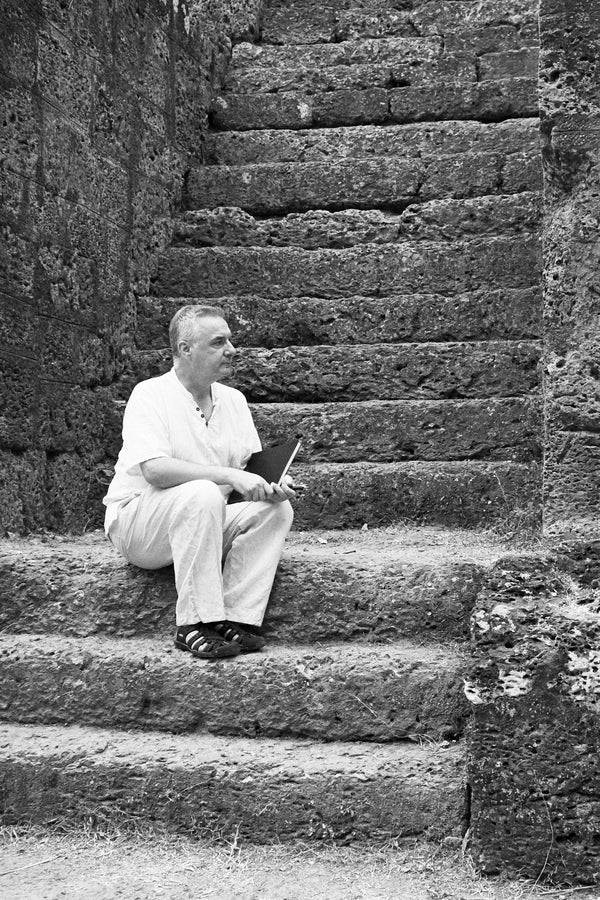
Join My Studio Journal
Receive occasional letters from my studio in Siem Reap—offering a glimpse into my creative process, early access to new fine art prints, field notes from the temples of Angkor, exhibition announcements, and reflections on beauty, impermanence, and the spirit of place.
No noise. No clutter. Just quiet inspiration, delivered gently.
Subscribe and stay connected to the unfolding story.
